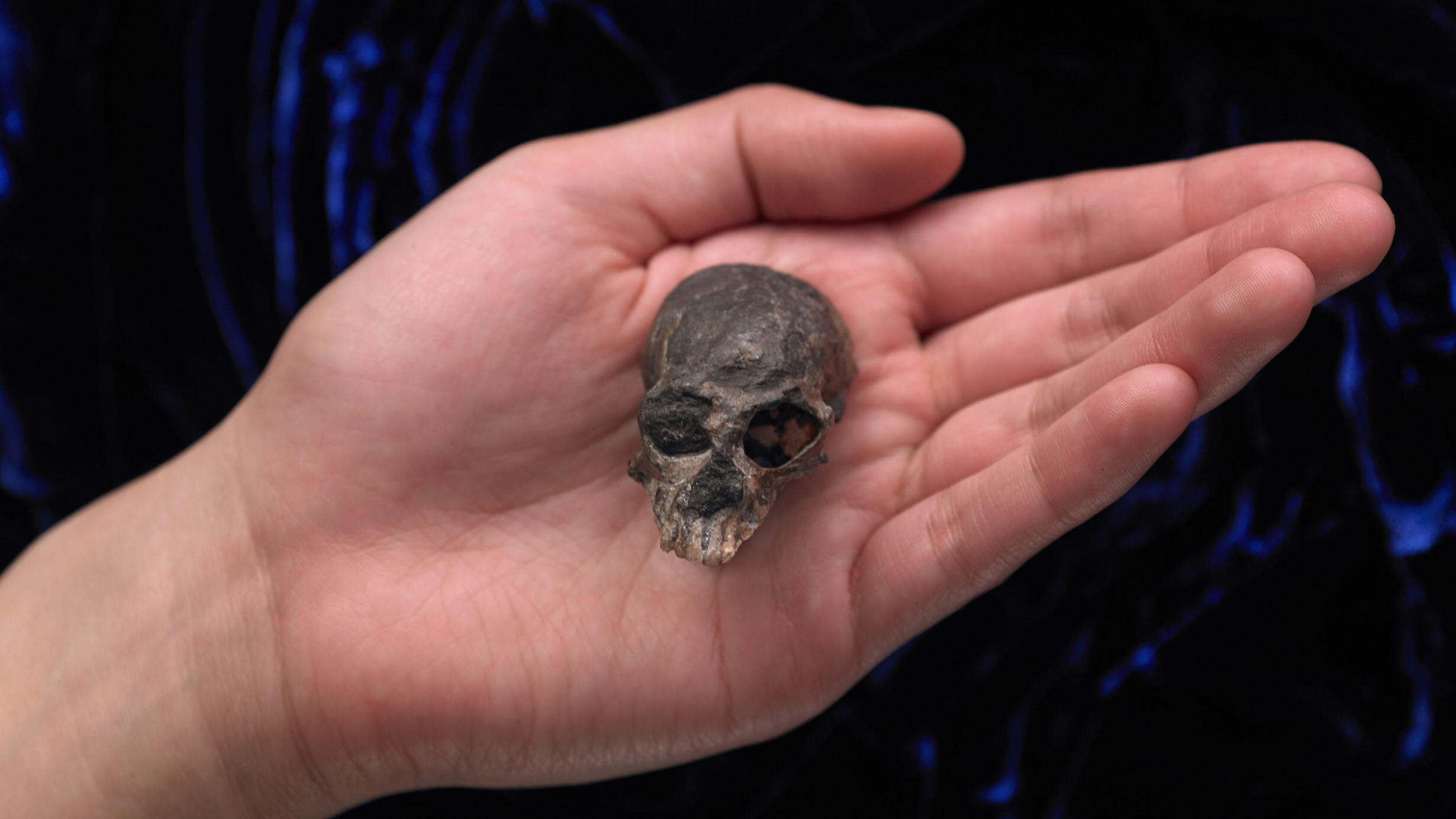20-Million-Year-Old Skull Reveals Anthropoid Primate Brains Evolved More Than Once
by AMNH on
 A fossil skull of Chilecebus carrascoensis, discovered in the Andes mountains of Chile, is the only known specimen of the species.
A fossil skull of Chilecebus carrascoensis, discovered in the Andes mountains of Chile, is the only known specimen of the species.N. Wong and M. Ellison/© AMNH
It has long been thought that the brain size of anthropoid primates—a diverse group of modern and extinct monkeys, humans, and their nearest kin—evolved to become larger over time. Now, new research on one of the oldest and most complete fossil primate skulls from South America shows instead that brain evolution in this group was far more checkered.
The study, published in the journal Science Advances, suggests that anthropoid brains enlarged repeatedly and independently over the course of anthropoid history, and their structure was more complex in some early members of the group than previously recognized.
“Human beings have exceptionally enlarged brains, but we know very little about how far back this key trait started to develop,” said lead author Xijun Ni, a research associate in the Museum’s Division of Paleontology and a researcher at the Chinese Academy of Sciences.
As part of a long-term collaboration with John Flynn, the Museum’s Frick Curator of Fossil Mammals, Ni spearheaded a detailed study of an exceptional 20-million-year-old anthropoid fossil skull discovered high in the Andes mountains of Chile, the only known specimen of Chilecebus carrascoensis.
© Xijun Ni and AMNH
“Through more than three decades of partnership and close collaboration with the National Museum of Chile, we have recovered many remarkable new fossils from unexpected places in the rugged volcanic terrain of the Andes,” Flynn said. “Chilecebus is one of those rare and truly spectacular fossils, revealing new insights and surprising conclusions every time new analytical methods are applied to studying it.”
Previous research by Flynn, Ni, and their colleagues on Chilecebus provided a rough idea of the animal’s encephalization, or the brain size relative to body size. A high encephalization quotient (EQ) signifies a large brain for an animal of a given body size. Most primates have high EQs relative to other mammals, although some primates—especially humans and their closest relatives—have higher EQs than others.
The new study takes this understanding one step further, illustrating the patterns across the broader anthropoid family tree. The resulting “PEQ”—or phylogenetic encephalization quotient, which takes into account the effects of close evolutionary relationships—for Chilecebus is relatively small, at 0.79. Most living monkeys, by comparison, have PEQs ranging from 0.86 to 3.39, while humans have an extraordinary 13.46 with dramatically expanded brain sizes even compared to our nearest relatives. With this new framework, the researchers were able to confirm that cerebral enlargement occurred repeatedly and independently in anthropoid evolution, in both New and Old World lineages, and included occasional decreases in size.
© Velizar Simeonovski
Using high-resolution x-ray computed tomography (CT) scanning and a 3D digital reconstruction of the inside of Chilecebus’ skull, the research team gleaned new insights into the anatomy of its brain. In modern primates, the size of the visual and olfactory centers in the brain are negatively correlated, reflecting a potential evolutionary “trade-off,” wherein visually acute primates typically have weaker senses of smell.
Surprisingly, the researchers discovered that a small olfactory bulb in Chilecebus was not counterbalanced by an amplified visual system. This finding indicates that in primate evolution the visual and olfactory systems were not as tightly coupled than was widely assumed.
The team also found evidence that Chilecebus was diurnal by examining the size of the opening for the optic nerve. And the infolding (sulcus) pattern of the brain of Chilecebus, or its “wrinkles,” while far simpler than in most modern anthropoids, possesses at least seven pairs of sulcal grooves and is surprisingly complex for such an ancient primate.